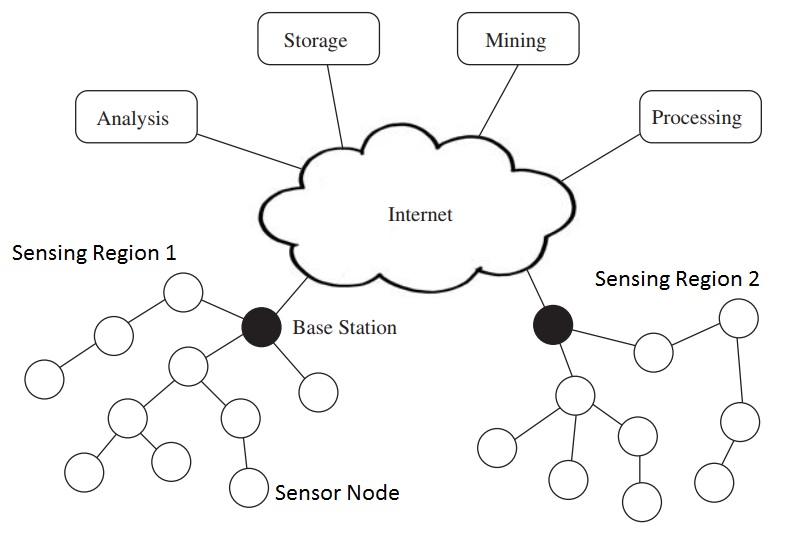What is a wireless sensor network?
A wireless sensor network (WSN) is a distributed system of spatially dispersed autonomous sensors to monitor physical or environmental conditions, such as temperature, sound, pressure, etc. and to cooperatively pass their data through the network to a main location. The sensors are not necessarily stationary, but may be mobile or static. WSNs are often used in areas where it is difficult or impossible to install a wired infrastructure, such as battlefields, forests, or buildings.
Components of a wireless sensor network
A wireless sensor network consists of the following components:
- Sensors: Sensors are the basic units of a WSN. They are responsible for collecting data from the environment.
- Actuators: Actuators are devices that can be used to control the environment. They are often used to control the flow of water or to turn on and off lights.
- Communication devices: Communication devices are used to transmit data between sensors and actuators. They can be either wired or wireless.
- Routers: Routers are used to route data between different parts of the network.
- Sink: The sink is the central point of the network. It is where all the data collected by the sensors is sent.
Applications of wireless sensor networks
WSNs have a wide range of applications, including:
- Military: WSNs can be used to monitor enemy movements, detect landmines, and track the movement of troops.
- Security: WSNs can be used to monitor buildings, detect intrusions, and control access.
- Environmental monitoring: WSNs can be used to monitor air quality, water quality, and the spread of wildfires.
- Agriculture: WSNs can be used to monitor crop growth, irrigation, and pest infestation.
- Industry: WSNs can be used to monitor machinery, track inventory, and control production.
Challenges of wireless sensor networks
WSNs face a number of challenges, including:
- Limited power: Sensors have limited power, so they must be designed to conserve energy.
- Limited bandwidth: The bandwidth of wireless channels is limited, so data must be compressed before it is transmitted.
- Security: WSNs are vulnerable to security attacks, so they must be designed to be secure.
- Deployment: WSNs can be difficult to deploy, especially in remote areas.
Future of wireless sensor networks
The future of WSNs is very promising. As the technology continues to develop, WSNs will become even more powerful and versatile. WSNs are expected to play a major role in a wide range of applications, including smart cities, the Internet of Things, and self-driving cars.
Conclusion
Wireless sensor networks are a powerful technology with a wide range of applications. As the technology continues to develop, WSNs are expected to play an increasingly important role in our lives.















